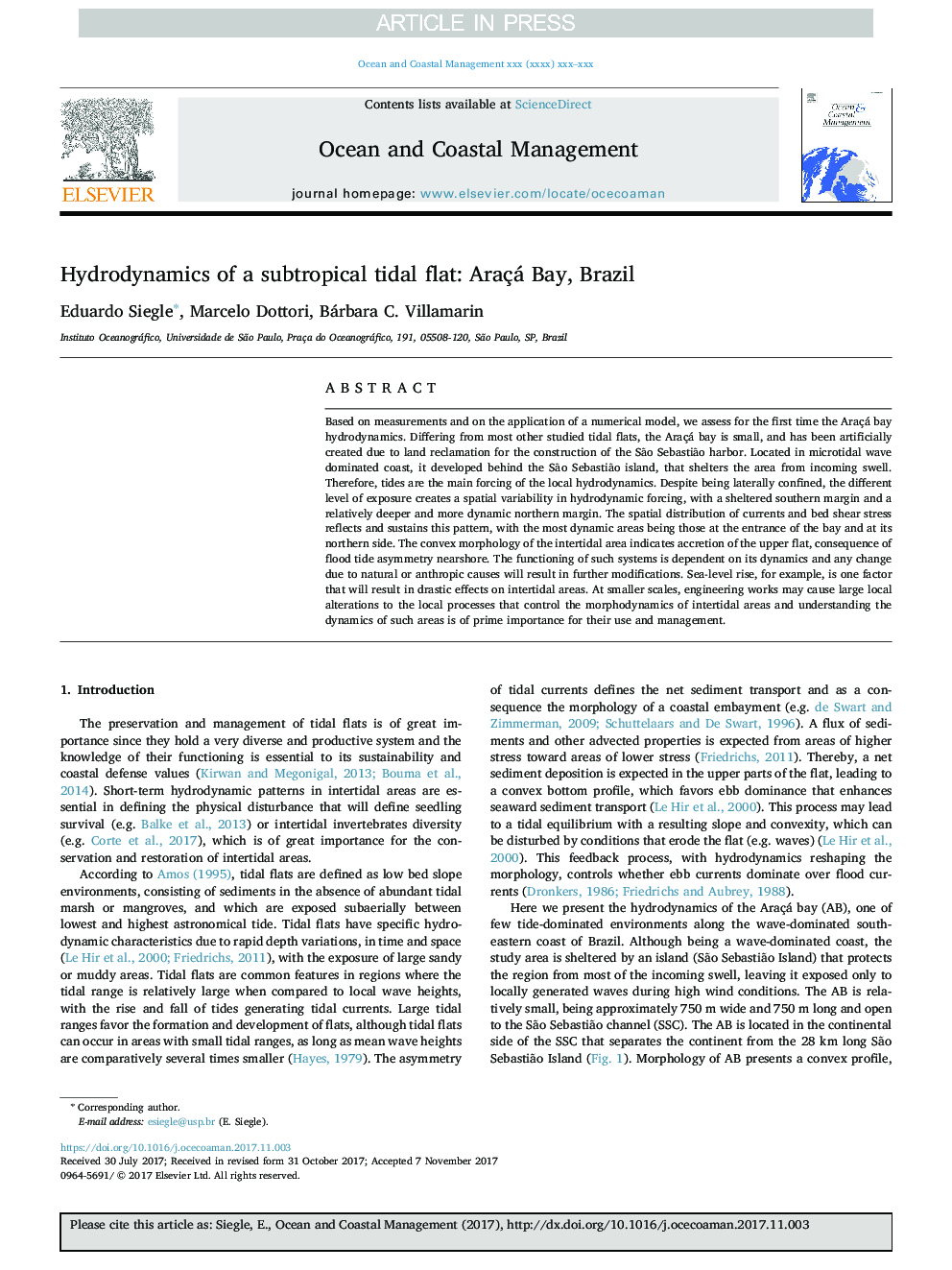| Article ID | Journal | Published Year | Pages | File Type |
|---|---|---|---|---|
| 11015628 | Ocean & Coastal Management | 2018 | 10 Pages |
Abstract
Based on measurements and on the application of a numerical model, we assess for the first time the Araçá bay hydrodynamics. Differing from most other studied tidal flats, the Araçá bay is small, and has been artificially created due to land reclamation for the construction of the São Sebastião harbor. Located in microtidal wave dominated coast, it developed behind the São Sebastião island, that shelters the area from incoming swell. Therefore, tides are the main forcing of the local hydrodynamics. Despite being laterally confined, the different level of exposure creates a spatial variability in hydrodynamic forcing, with a sheltered southern margin and a relatively deeper and more dynamic northern margin. The spatial distribution of currents and bed shear stress reflects and sustains this pattern, with the most dynamic areas being those at the entrance of the bay and at its northern side. The convex morphology of the intertidal area indicates accretion of the upper flat, consequence of flood tide asymmetry nearshore. The functioning of such systems is dependent on its dynamics and any change due to natural or anthropic causes will result in further modifications. Sea-level rise, for example, is one factor that will result in drastic effects on intertidal areas. At smaller scales, engineering works may cause large local alterations to the local processes that control the morphodynamics of intertidal areas and understanding the dynamics of such areas is of prime importance for their use and management.
Related Topics
Physical Sciences and Engineering
Earth and Planetary Sciences
Oceanography
Authors
Eduardo Siegle, Marcelo Dottori, Bárbara C. Villamarin,
